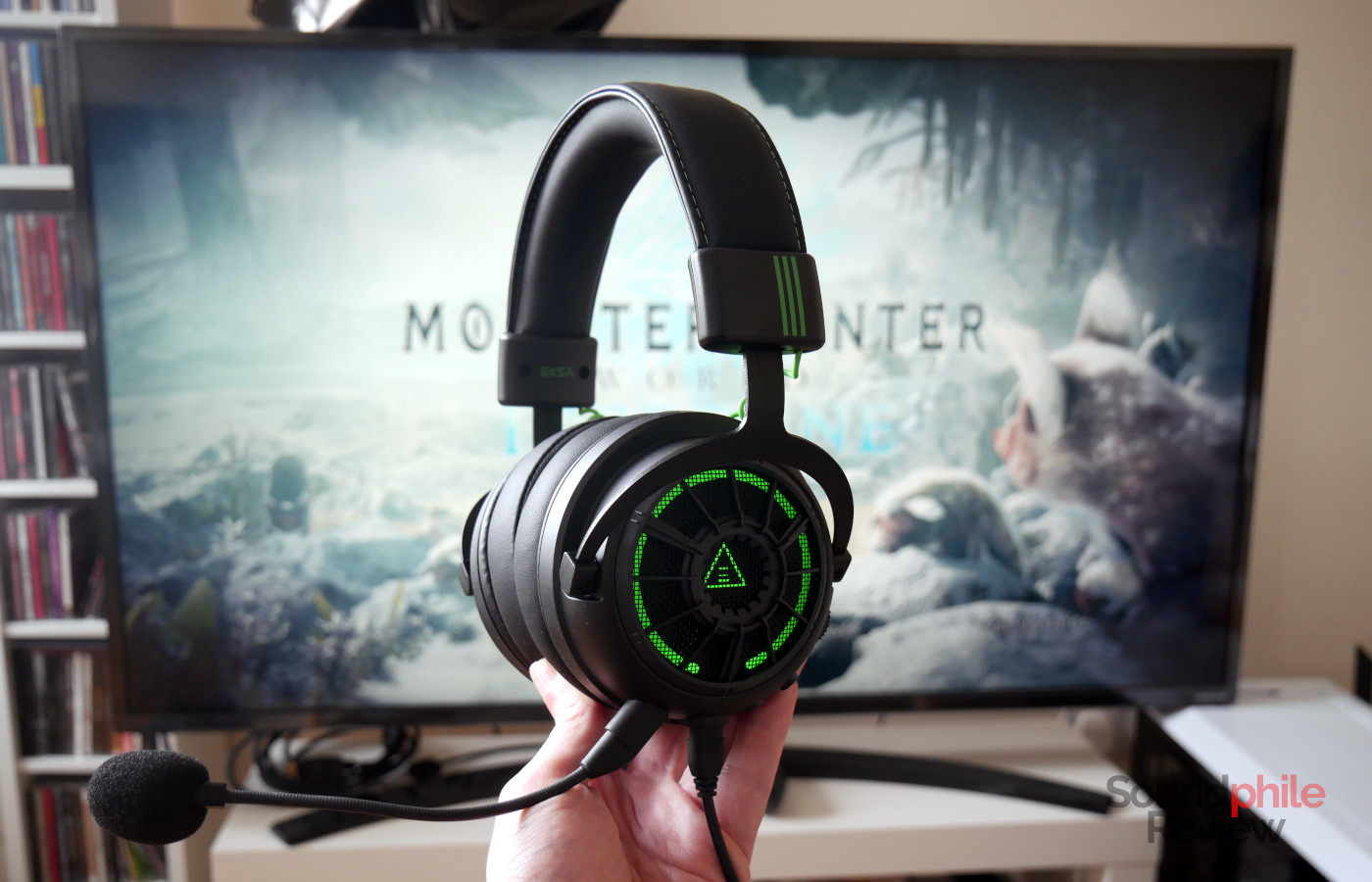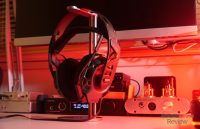Gaming headphones have become more and more common over the years and have evolved, too, from what was low-end, bad-sounding headphones with tacky designs and weird lights to very decent products. The EKSA Star Engine Pro are definitely in the latter category and are noteworthy because they offer quite decent sound quality while also offering advanced features, all at a low price.
Disclaimer: I received a complimentary unit directly from EKSA. They have more information on their website.
TL;DR: recap
| Pros |
Cons |
| + Great comfort
+ Super effective isolation + A lot of connectivity options + Does not require drivers + Compatible with consoles, phones, tablets and Steam Deck |
– 7.1 surround is not as effective as it could be
|
Rating: 6.5/10
Packaging & Accessories
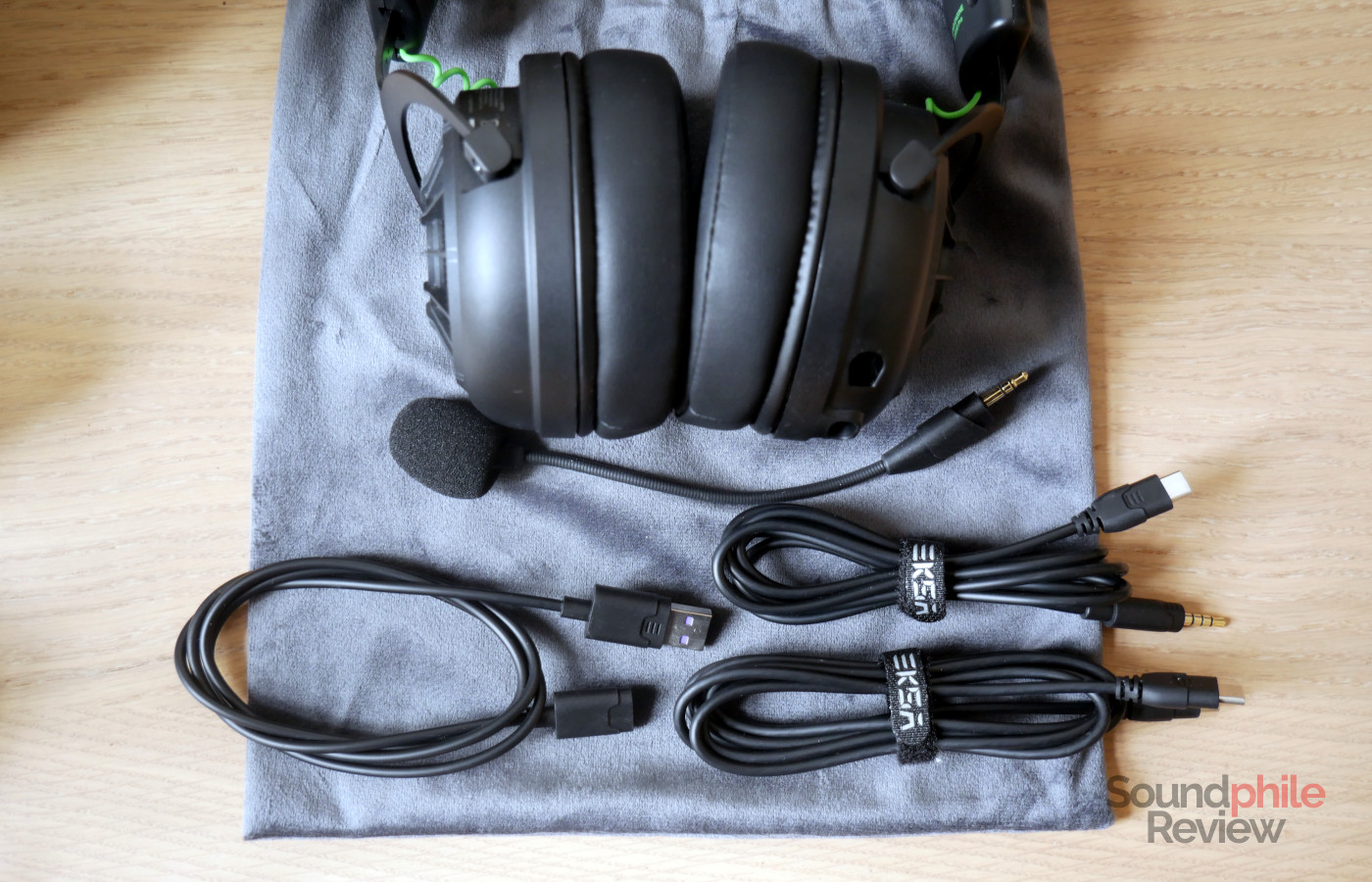
The EKSA Pro comes with a good set of accessories: there is a set of cables (USB-C to USB-C, to USB-A and to 3.5 mm jack), a drawstring pouch, an anti-wind cover for the microphone and a manual.
Design & Comfort
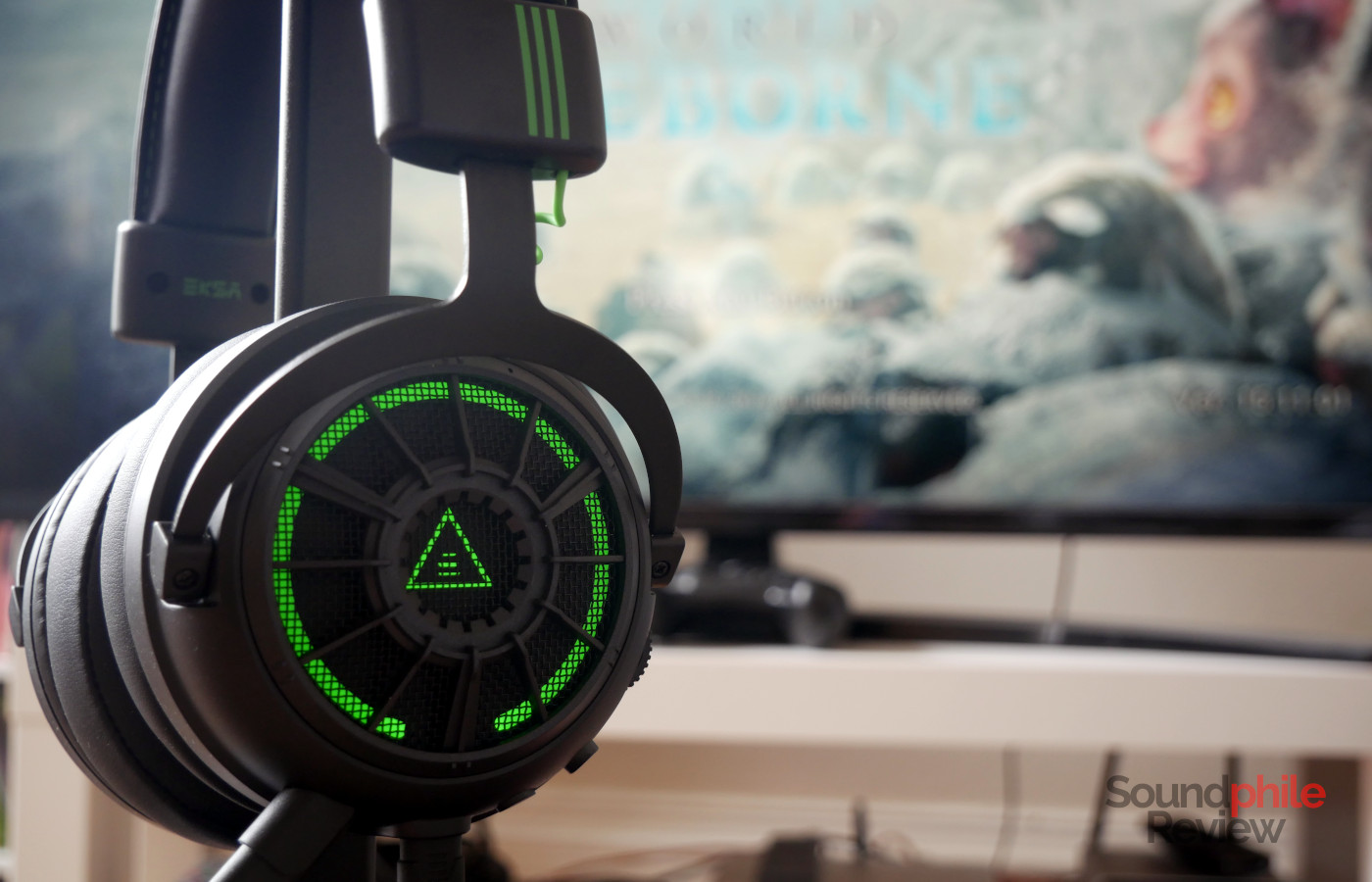
The EKSA Star Engine Pro are your typical gaming headphones. With a design that borrows heavily from Beyerdynamic, they do introduce their own peculiarities that make them their own thing. The earcups have a grille with an inner circle connected to the rest by spokes, though it is purely for aesthetics as the cups are actually closed. Behind the grille is in fact the back of the cups, which hosts LED lighting in green. The cable connecting the two earcups as well as stripes on the headband are of the same green hue. Overall, the design is absolutely “gamery”.
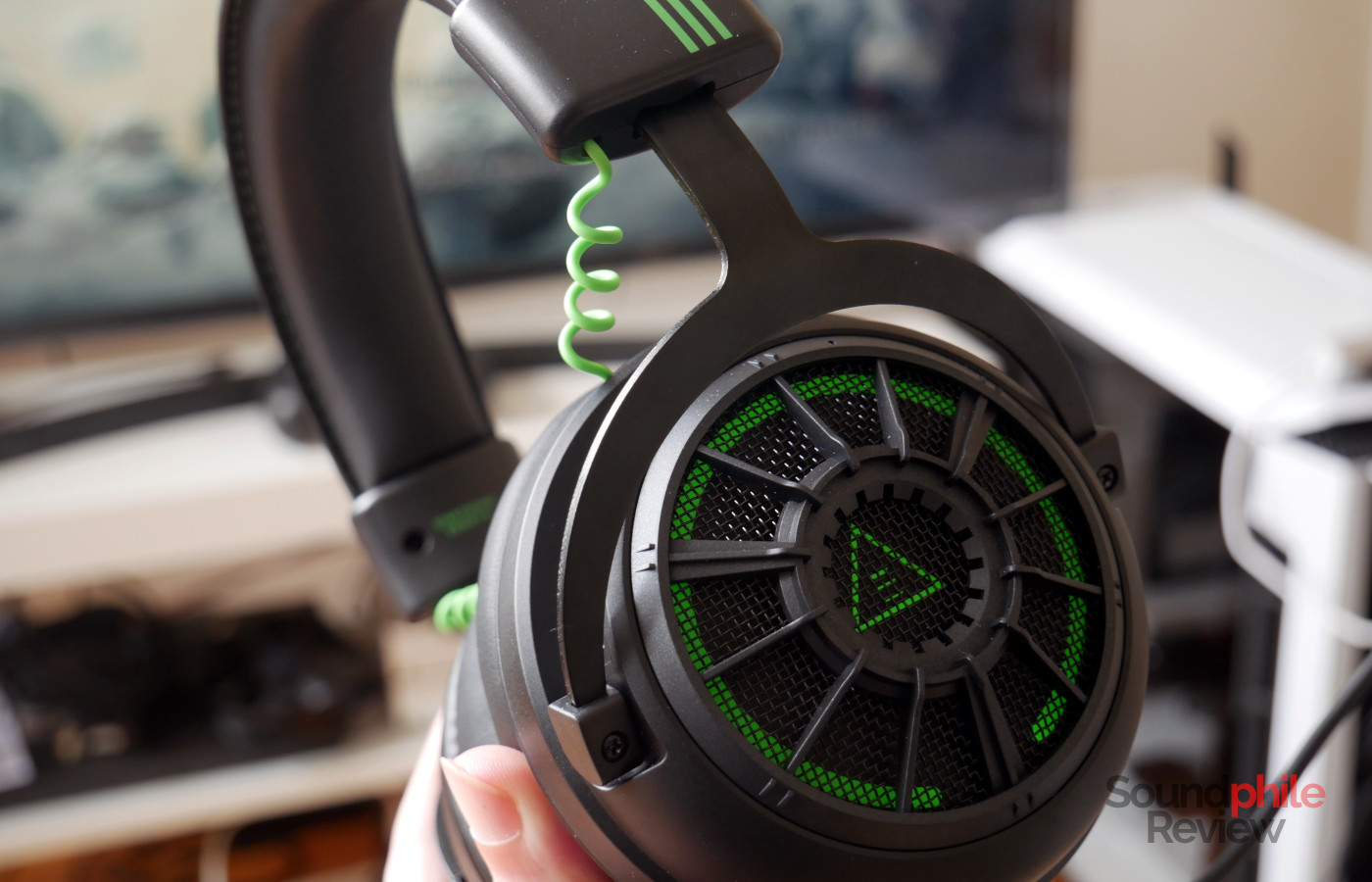
One thing to note is that the LEDs stay on as long as the USB cable is connected. On my desktop PC, they stay on even when the computer is turned off. This is easy to fix (by either turning off the LEDs or disconnecting the USB cable), but it’s a minor imperfection.
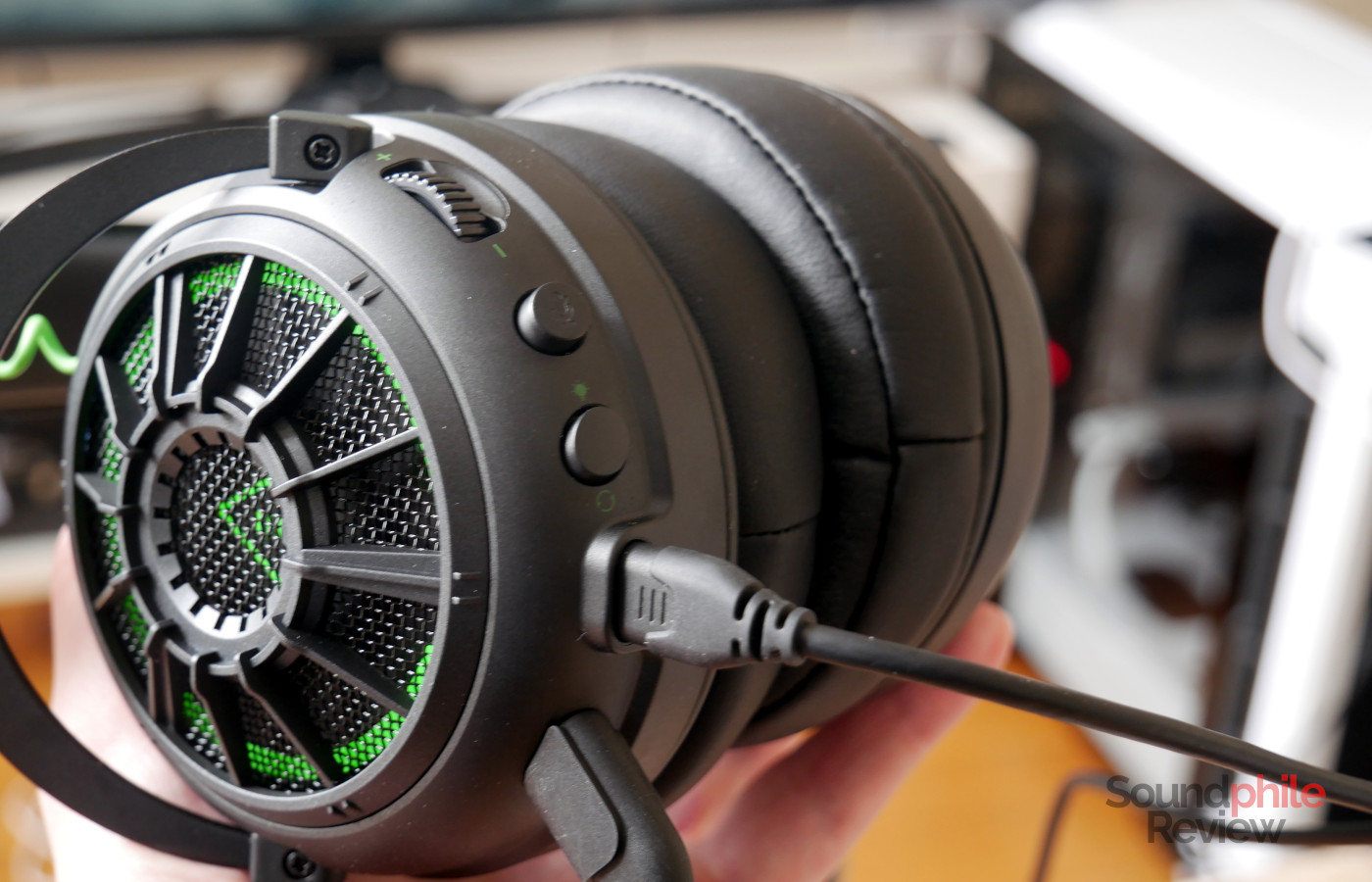
Build quality is better than I would expect at this price point and there are no creaks or other signs of bad assembly or low-quality materials, in fact it’s quite the contrary!
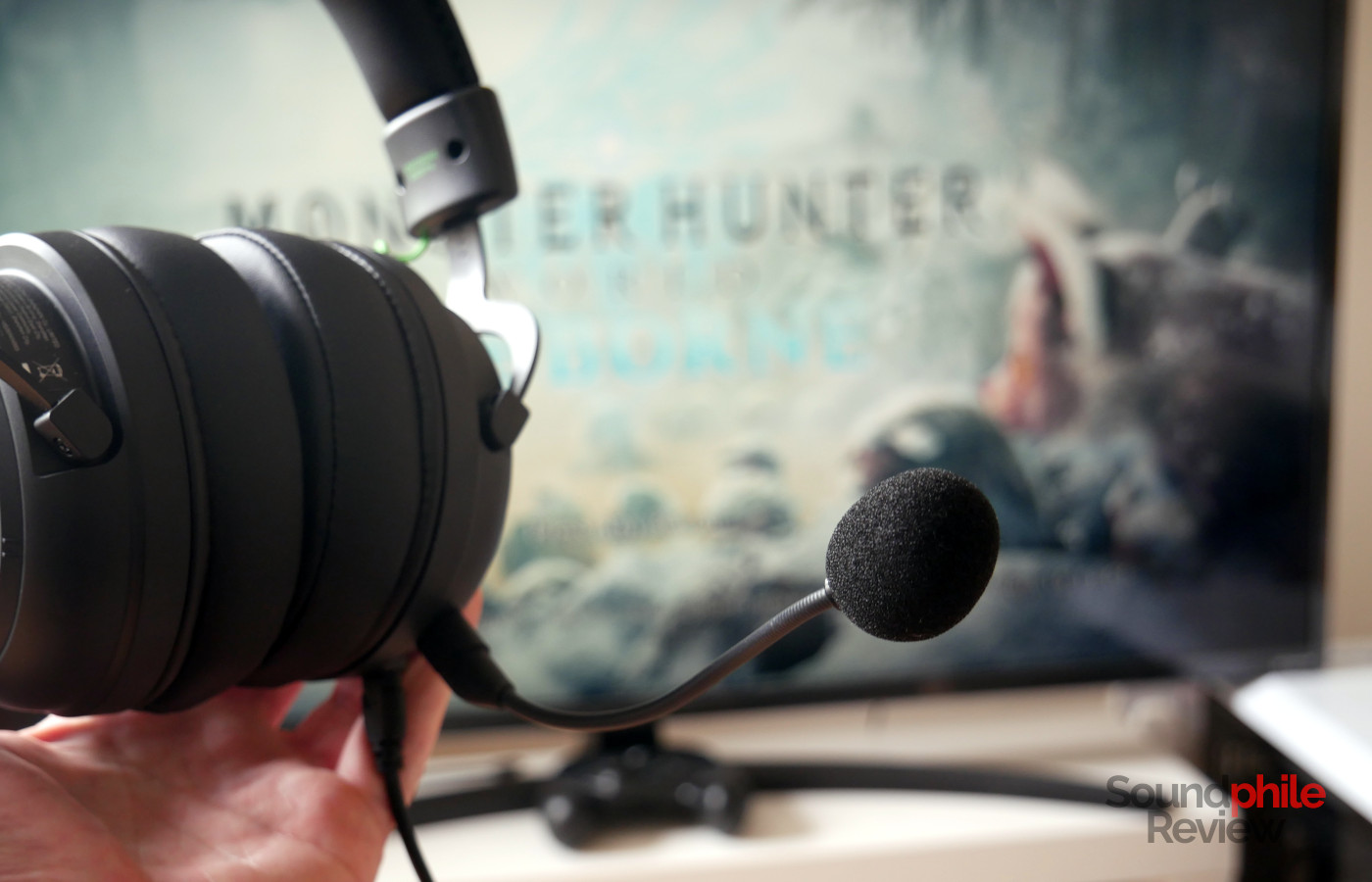
The left earcup hosts the microphone (which is removable), the USB-C port, a button to turn on and off the surround mode as well as the LED lights (by pressing and holding it), a button to disable the microphone and a rheostat to control the volume.
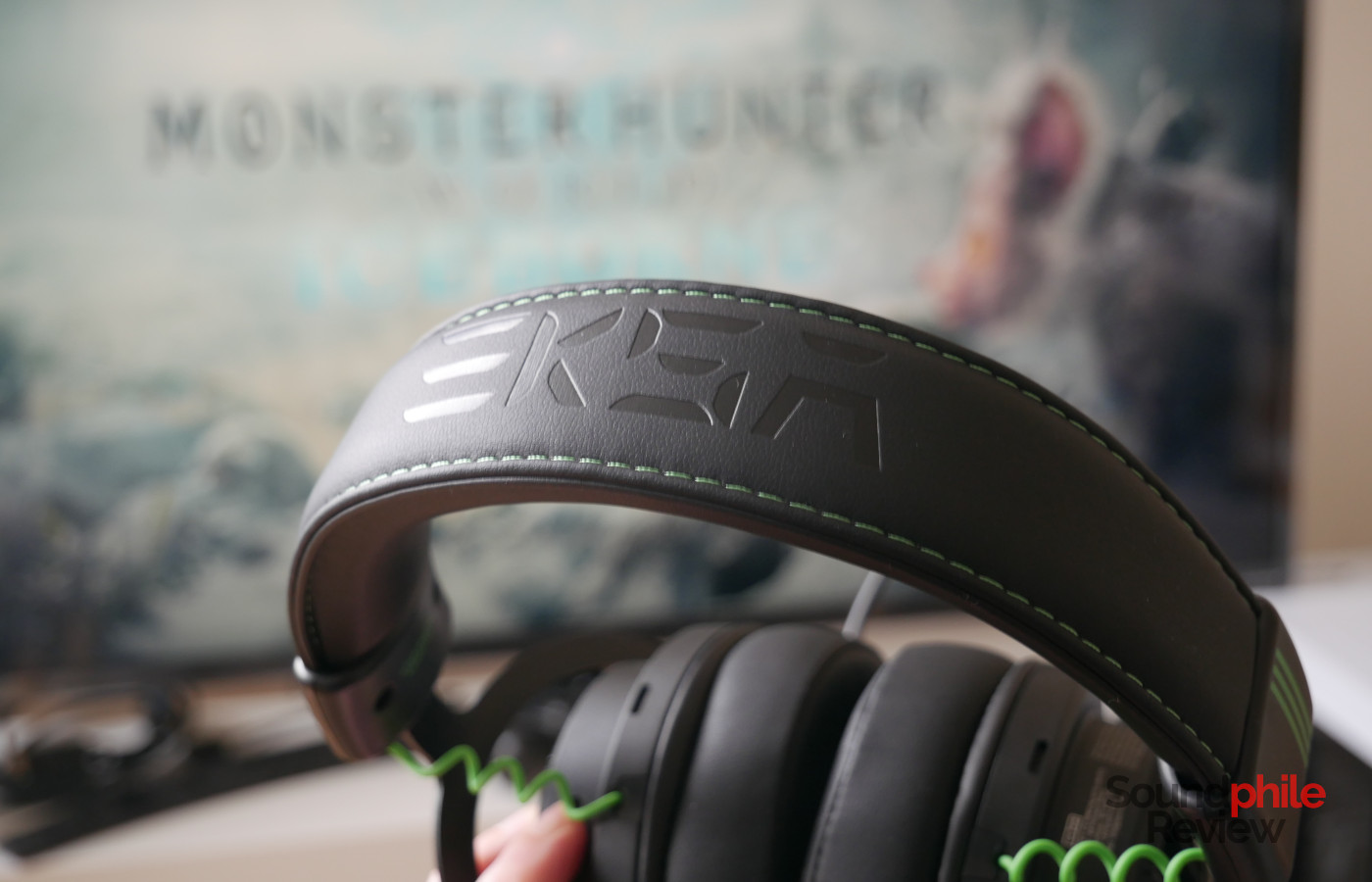
Comfort is first class, as both the headband and the earpads are quite well padded and soft. This, combined with the low weight and the right amount of lateral clamp, make the Star Engine Pro quite comfortable to wear, even during longer gaming sessions. As my scalp is seriously sensitive and I can wear the headphones for at least a couple of hours before feeling any discomfort, I would say that “normal” people can wear them almost indefinitely.
Passive isolation is quite great and it is high enough to block my girlfriend’s voice – on multiple occasions, she had to basically shout at me while standing in front of me for me to hear her, and I was keeping the volume quite low. The Star Engine Pro are definitely good from this perspective and allow you to isolate yourself from your surroundings quite effectively.
Software
EKSA does not provide any software with the Star Engine Pro… and that’s actually a great thing. The reason why I say this, is because that means the features do not depend on the software and you can enjoy them independently of it. You have the same features whether you are playing on your Windows PC, on a Mac, on an Xbox, on a PlayStation, on a Switch or on a mobile device. It even works right out of the box with Linux, and by extension on the Steam Deck.
The only caveat in that case is that, at least on Linux, volume has to be maxed out on the source device (so, using software) in order for the headphones to work. To adjust the volume you have to use the rheostat on the headphones themselves. This is not a big issue as you can adjust the volume quite well even just using the rheostat, though it does prevent you from adjusting it using your keyboard (or, in the case of the Deck, using the volume buttons).
Sound & Specs
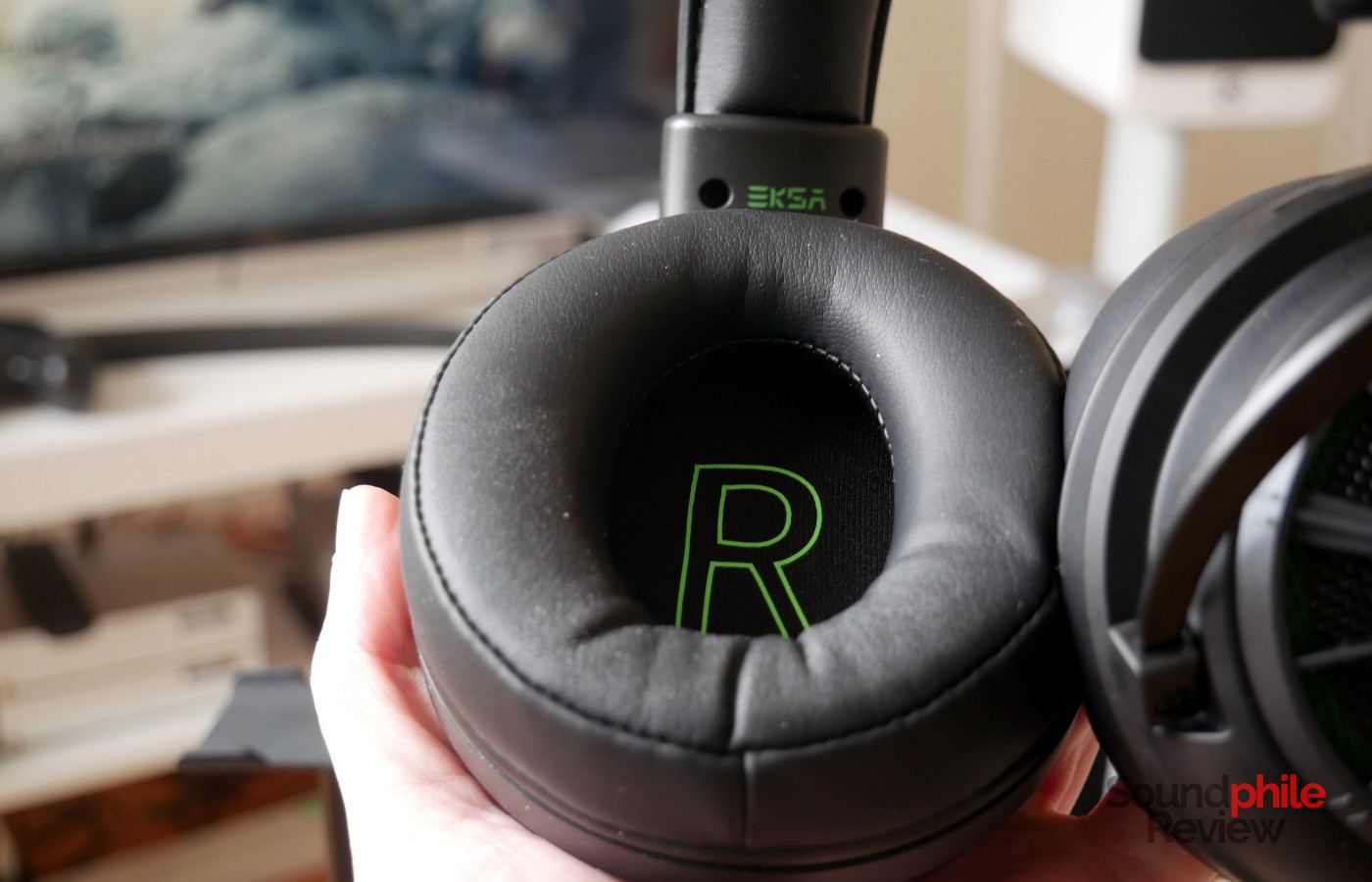
I’ve tested the EKSA Star Engine Pro using both my desktop PC and my Steam Deck.
The EKSA Star Engine Pro take advantage of the USB connection to offer a 7.1 surround sound mode. What I noticed is that this mode does add some spatiality to the sound in the games I’ve tried (Monster Hunter: World, Project Cars, Redout, Middle Earth: Shadow of War), but it mostly adds more and more accurate locations rather than making things sound different. To be more specific, sounds coming from behind actually sound like they’re from behind, rather than from a generic central location as with normal stereo sound. For sounds coming from the front or from the sides, there’s not really much difference. There is quite a large difference in terms of tonality, though: lows get pumped to 11 and treble is accentuated, too, which makes using this mode for music not recommended. Still, the mode does maintain its promise of enhancing immersion while gaming as it does provide additional spatial cues.
As gaming headphones, I find the Star Engine Pro to be quite good. In fact, I’ve used them with multiple games and found that they offer a good balance between a “fun” sound signature and one that actually allows you to enjoy your games. The microphone is definitely decent and records clear audio, though I find its volume to be a bit low; moving the boom closer to the mouth brings it to a good level, though, so it’s a matter of finding the right position.
Let’s analyse how the headphones sound without any effects enabled. Soundstage is limited in both width and depth and it does make music sound like you are wearing headphones. Imaging is also quite limited, as it offers just the basic three positions – left, centre and right – with very few nuances between them. Instrument separation is poor, with instruments losing their individuality in complex tracks.
Like most gaming headphones, the EKSA Star Engine Pro offer elevated bass, but contrarily to many others it doesn’t trample everything else and, instead, is just north of neutrality, adding some warmth and colour but not becoming overwhelming. This was a very welcome surprise as it makes the Star Engine Pro suitable for listening to music as well. Speed is not the best quality of their bass, but it is fast enough to deliver a good punch. Decay is quite long, though, which gives transients a “wet” feeling. Details are sufficient and emerge even in crowded tracks.
Midrange is recessed, though not heavily; in fact, it is always audible. Still, this recession means that details are not always clear and that they’re sometimes obscured by bass. Midrange is heavily tilted towards the lower region and this is probably the main reason why it sounds muddy. Tonally speaking, the mids are not quite great. Speed is decent but, again, decay is quite long and makes instruments like drums “wet”. Detail is sufficient, but it gets lost in the mix with more complex tracks.
While bass is all in all controlled for gaming headphones standards, treble is much less so. In fact it is very emphasised and has several peaks that make it fatiguing and harsh. Cymbals sound tinny and lacking body. Detail is also an issue, as it is quiet low overall and you only get a confused picture, rather than a clear representation.
EKSA Star Engine Pro Comparisons
While I’m writing this I do not have access to the gaming headphones I previously reviewed (e.g. the Plantronics RIG 500 Pro), so I will only compare the EKSA Star Engine Pro to the EKSA E1000. The latter is much cheaper and there’s a large difference not only in build quality, but also in how they sound, with the Star Engine Pro sounding much more balanced; the E1000 are not as good when reproducing music as their technicalities are worse than the Star Engine Pro’s and their tonality is much more V-shaped, leading its sound quality to be significantly inferior.
Final Thoughts
The EKSA Star Engine Pro are overall decent gaming headphones in the sub-$100 range. They offer most of the features that people usually look for in such headphones: comfort, isolation, good build quality, decent sound quality for games. They’re more limited when it comes to music, though, so they’re not really all-rounders. They can be used to listen to music and they do a better job at that than many other gaming headphones I’ve tried. That’s why I find that the sound signature being unbalanced, and becoming more unbalanced when enabling the surround mode, is really the only potential issue of these headphones. You probably won’t notice this too much while gaming, though, and that’s their main usage target, so it really is up to your personal preference.

